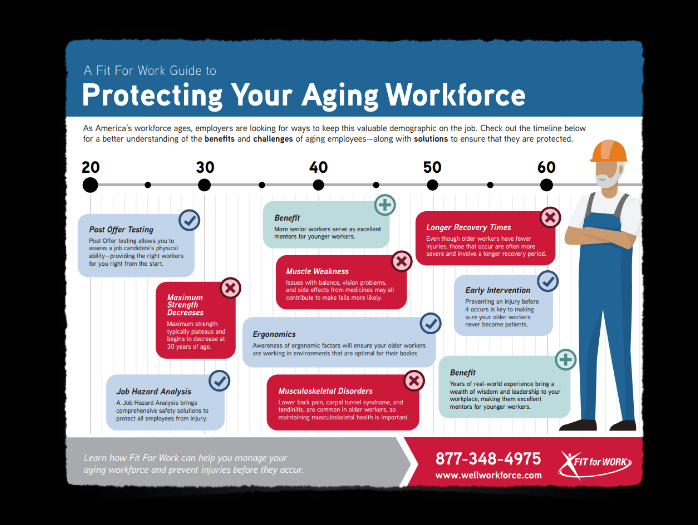Musculoskeletal disorders (MSD) are injuries or dysfunctions affecting muscles, bones, nerves, tendons, ligaments, joints, cartliages, etc. According to the Bureau of Labor and Statistics, in 2014 the leading nature of injury or illness was sprains, strains, or tears at a rate of 38.9 cases per 10,000 full-time workers. The median required days away from work was 10 days for this group.  What strategies are in place at your company to help prevent your employees from becoming a part of these yearly statistics? Stretching programs are widely utilized across many different industries, however, little is known about the specific outcomes of stretching programs. Stretching itself has been demonstrated to create many different physiological changes, most commonly recognized are lengthening muscles and improving range of motion. It also has been demonstrated to have some neurophysiological changes on the body. BUT, do stretching programs actually prevent work related MSD Injuries? A few questions one might want to consider are if your workers actually need increased range of motion for their jobs. Will they be that much more effective and safe if they have muscles that are a little longer? Is the program designed to actually provide enough duration to physiologically change muscle tissues or produce neurophysiological changes? These are often questions that go unanswered prior to the design and implementation of stretching programs in many work places. We shouldn’t assume that because stretching may help prevent some injuries in athletes, it has to prevent injuries in our workers. The research just does not support the use of preventative stretching or stretch/flex programs as stand-alone MSD preventative method. It is important we consider all the leading indicators to an injury, not putting too much weight and hope in a stretching program that promises decreased injuries rates without looking at the whole picture.
What strategies are in place at your company to help prevent your employees from becoming a part of these yearly statistics? Stretching programs are widely utilized across many different industries, however, little is known about the specific outcomes of stretching programs. Stretching itself has been demonstrated to create many different physiological changes, most commonly recognized are lengthening muscles and improving range of motion. It also has been demonstrated to have some neurophysiological changes on the body. BUT, do stretching programs actually prevent work related MSD Injuries? A few questions one might want to consider are if your workers actually need increased range of motion for their jobs. Will they be that much more effective and safe if they have muscles that are a little longer? Is the program designed to actually provide enough duration to physiologically change muscle tissues or produce neurophysiological changes? These are often questions that go unanswered prior to the design and implementation of stretching programs in many work places. We shouldn’t assume that because stretching may help prevent some injuries in athletes, it has to prevent injuries in our workers. The research just does not support the use of preventative stretching or stretch/flex programs as stand-alone MSD preventative method. It is important we consider all the leading indicators to an injury, not putting too much weight and hope in a stretching program that promises decreased injuries rates without looking at the whole picture.
Injury Prevention Stretching – Worth It?





